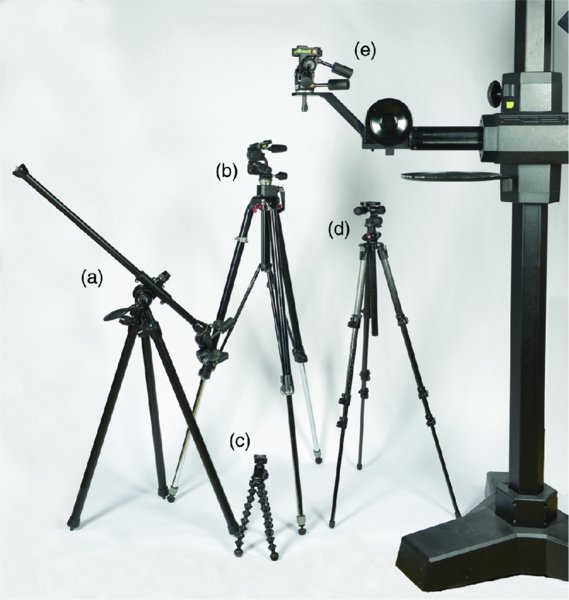Appendix 1 Tripods and Camera Supports
A.1 Tripods
With the introduction of digital cameras and their mass-market appeal, there seems to be a perception that tripods are no longer required and as such their use appears to have gone out of fashion.
People say to me ‘oh I don't need one of those, they only get in the way’. I would say, however, that 95% of my work is shot using some form of camera support or tripod. For my part, the requirement within a scene or studio hasn't changed with the introduction of digital photography. Not only do they offer a stable support allowing slow shutter speeds to be used, they also offer continuity between images. Finally they have another benefit, which is often overlooked, that of where you put your camera in a blood stained room. The tripod is an ideal safe place for it to sit without the risk of it becoming contaminated by the scene, or vice versa.
The beauty of tripods is that they really are available in every shape and size, for every application. They range from the large studio types such mono stands, all the way through to small gripping tripods, which can be attached to almost anything. They also made from a variety of materials, from wood through to carbon fibre, so there is bound to be one to suit you or your application (see Figure A.1).

Figure A.1 Shows a typical assortment of tripods (a) Benbo (b) Manfrotto 058 (c) Gorilla ...
Get Forensic Photography: A Practitioner's Guide now with the O’Reilly learning platform.
O’Reilly members experience books, live events, courses curated by job role, and more from O’Reilly and nearly 200 top publishers.

